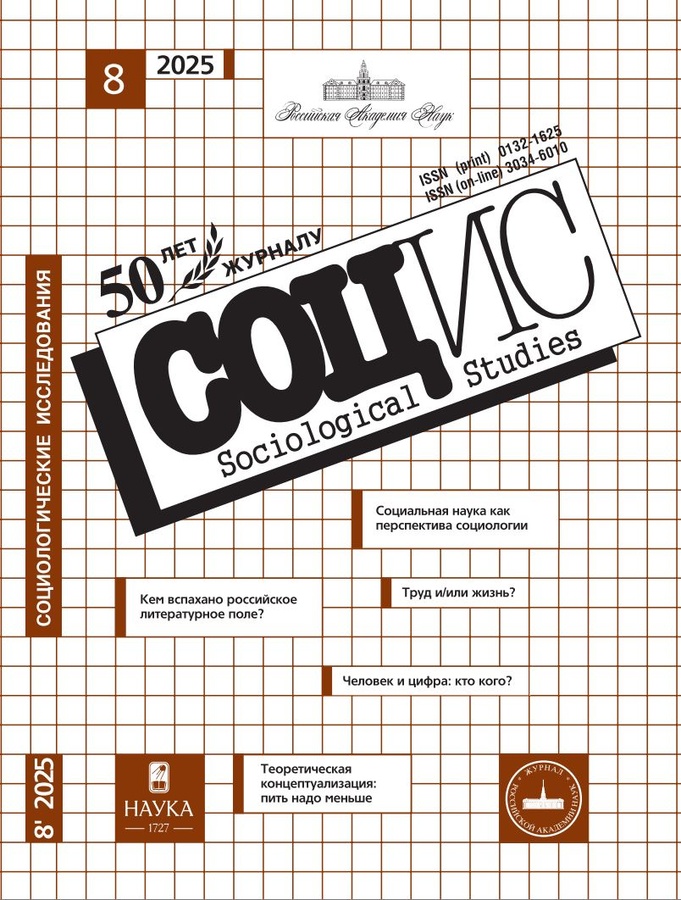Social tensions in the southern federal district: a retrospective protest practices analysis, 2015–2024
- Authors: CHELPANOVA D.D.1, KOTLYAROV S.E.2
-
Affiliations:
- Southern Scientific Centre RAS
- Don State Technical University
- Issue: No 8 (2025)
- Pages: 147-152
- Section: FACTS. COMMENTS. NOTES
- URL: https://freezetech.ru/0132-1625/article/view/693348
- DOI: https://doi.org/10.31857/S0132162525080131
- ID: 693348
Cite item
Abstract
In the article, the authors’ attention is focused on solving an urgent scientific problem of studying the dynamics of protest activity within the Southern Federal District. The quantitative dynamics of protest activity in the Southern Federal District as a whole by year for the period from 2015 to 2024 has been determined, the frequency and mass of protest actions, peaks and epicenters of socio-political tension have been identified. The periodization of protest activity in the south of Russia is presented, indicating destabilizing causes of discontent among the population of the Southern Federal District. Four stages of protest activity have been identified, in each of which foci of social tension have been identified. The first stage of protest activity was characterized by the dominance of socio-economic discontent with the formation of a political protest against violations of civil rights and restrictions on freedoms, with epicenters in the Volgograd and Rostov regions. The second period was characterized by an expansion of the protest agenda: environmental demands were added to economic demands, as well as increased politicization of protests in connection with elections and constitutional changes with epicenters in Sevastopol, Astrakhan region and the Republic of Kalmykia. In the third period, there was a shift in protest focus to healthcare and education due to the COVID-19 coronavirus pandemic, as well as an increase in local protests related to environmental and infrastructural problems with the epicenter in the Republic of Kalmykia. The fourth stage of protest activity is associated with the intensification of political protests and the emergence of new triggers related to the consequences of its epicenters in Sevastopol and the Krasnodar region. In conclusion, the authors conclude that the analysis of protest activity in the Southern Federal District reflects all-Russian trends, identifying local problems typical of the Southern Federal District regions. Modern challenges (economic crises, pandemic, special military operation) exacerbate systemic problems, transferring them to public space in the form of street demonstrations.
About the authors
D. D. CHELPANOVA
Southern Scientific Centre RAS
Email: chelpanova@ssc-ras.ru
Rostov-on-Don, Russia
S. E. KOTLYAROV
Don State Technical University
Email: ks118@yandex.ru
Rostov-on-Don, Russia
References
- Baranova G. (2012) Methodology of the Analysis of Protest Activity of the Russian Population. Sotsiologicheskie issledovaniya [Sociological Studies]. No. 10: 143–152. (In Russ.)
- Davydov D. A. (2022) Dynamics of Mass Protest Actions in Modern Russia: An Event Study. Monitoring obshhestvennogo mneniya: ekonomicheskie i social’nye peremeny [Monitoring of Public Opinion: Economic and Social Changes]. No. 5: 72–93. (In Russ.)
- Latov Yu.V. (2017) Russian Protest Moods and Actions. Sociologicheskaja nauka i socialnaja praktika [Sociological Science and Social Practice]. Vol. 5. No. 1: 51–69. (In Russ.)
- Semenov A. V. (2018) Protest Activity of Russians in 2012–2013. Sotsiologicheskie issledovaniya [Sociological Studies]. No. 11: 54–63. (In Russ.)
- Vnukova L. B., Chelpanova D. D., Pashchenko I. V. (2014) Socio-Political Tensions in the Polyethnic Region. Rostov-on-Don: SSC RAS. (In Russ.)
- Yudina T. N., Mazaev Yu.N. et al. (2020) State and Dynamics of Protest Activity in Modern Russian Society. Vestnik Permskogo un-ta. Filosofiya. Psihologiya. Sociologiya [Perm University Bulletin. Philosophy. Psychology. Sociology]. No. 1: 139–151. (In Russ.)
Supplementary files










